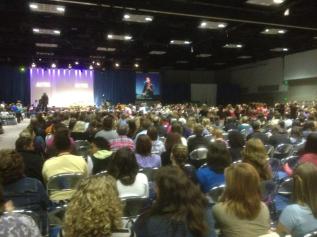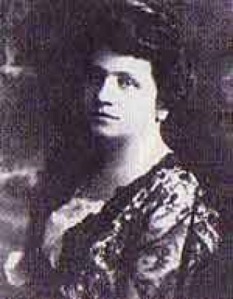Every year during the admissions process, the same question tends to be asked in various ways: What do you look for in a future OT student? What qualities do you think make the strongest OT program candidates? What does the program look for in the students it chooses to accept for admission? I am often curious if students use my responses to self-assess their standing in the admission process, or if it is just an appropriate thing to ask when a faculty member interviewing them asks what questions they may have.
There certainly is no single vision of what the “ideal” candidate for OT school should be like. Our profession is a diverse one, and it is important that we admit and prepare a diverse group of people to enter our profession. Some candidates will be “traditional” college students, having completed an undergraduate degree just prior to pursuing a graduate program in occupational therapy. Other candidates have had previous careers in a variety of fields and for some individual reason, are now choosing to pursue a career in OT. Some candidates are international students, whereas others grew up and were educated in our city. Some candidates have had to overcome significant challenges to achieve their education, whereas others have had a clear path to pursue an advanced degree. Some candidates are very outgoing, whereas some candidates are more reserved. These individual differences in experience, background, and personality are good, because the clients and families with whom they will work will come from a wide variety of backgrounds and have very different personalities as well. However, aside from these varying individual factors, I do believe there are some things that candidates should possess. Five of these things include:
1. A foundational understanding of OT. Undoubtedly, a strong candidate to an OT education program will be able to articulate a general understanding of the field. In my experience, applicants who have observed OT practice in a variety of settings are best prepared to do this. An applicant should able to speak to what is it that OTs actually do, what is the typical focus or goals of OT treatment, and how OTs work with their clients. They should be able to share experiences they have had in seeing an OT work with clients. Of course, this will vary somewhat by practice setting, but if all an applicant can offer is that OTs help people, the concern becomes that he or she may have too limited of an understanding of OT and may be pursing something that is ultimately not a good professional fit.
2. A passion for pursuing a career specifically in OT. Applicants come to learn about OT in a variety of ways. Some have had personal or family experiences with an OT, some know an OT, and others see or hear something about OT that catches their attention. Some applicants have known for years they want to be an OT whereas others have learned of the profession more recently. There are all kinds of paths to becoming an OT, and that is exciting. However, an applicant should be passionate about why they want to pursue a career specifically in OT. Applicants may discuss they are attracted to being able to address the things that are meaning and purposeful in a client’s life. They may offer that they are attracted to the holistic approach of the field. They may like the versatility of the field and the creativity that is required. A variety of reasons may exist, but it should be clear that the applicant sees a fit between their interests, values, and abilities and the field of OT. Yes, OTs “help people,” but so do all other health professionals. And for that matter, so do accountants. Expressing a desire to help people is probably not compelling enough to demonstrate why you want to be an OT.
3. Strong communication skills. At risk of seeming cliché about this, strong communication skills are essential for a future OT. Being able to express oneself in a clear, organized, and effective manner are critical. OTs will be required to communicate with clients, family members, staff, peers, and other professionals everyday of their professional lives. Therefore, applicants must demonstrate the ability to express themselves effectively to be considered a strong candidate for admission.
4. Engagement in activities outside of the classroom. I assess this characteristic in a broad way and in the context of the students’ experience, but strong candidates are typically engaged in things beyond going to class and doing very well academically. For a traditional college student, this may take the form of being engaged in campus activities or community service activities. For other students, this may be in form of work experience or family activities. Regardless of the actual activity, being involved in other activities is a way to demonstrate the ability to work with others, to assume leadership roles, and to manage multiple demands in life — all of which are important as an OT student and a future OT.
5. Experience of working with a wide variety of people. Similarly, this may take different forms depending on the student and his or her life experience. Some applicants extensively participate in community activities with people with disabilities or underserved populations. Some applicants have served in the Peace Corp or have participated in other types of service activities locally or abroad. Some applicants coach their younger siblings’ soccer teams. Again, the actual activity may widely vary, but they all serve as evidence of an applicant’s ability to work with others from various backgrounds, solve problems, be creative, and assist in meeting the needs of others.
What other characteristics do you think applicants to OT education programs should possess to be considered a strong candidate for admission?



